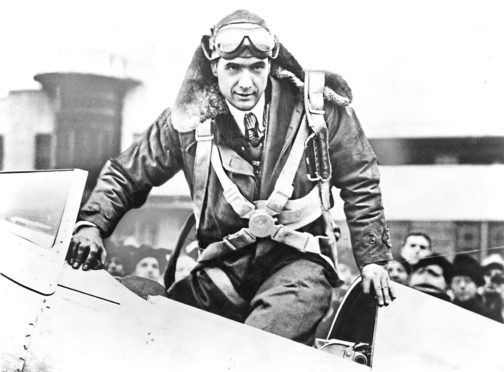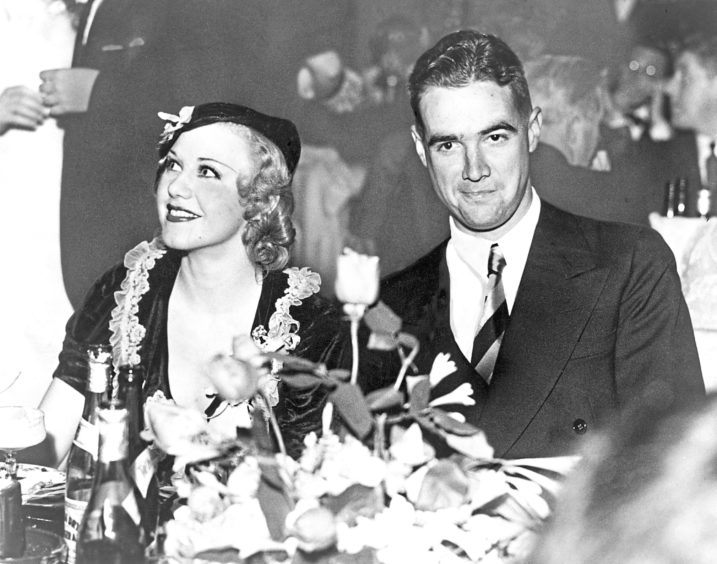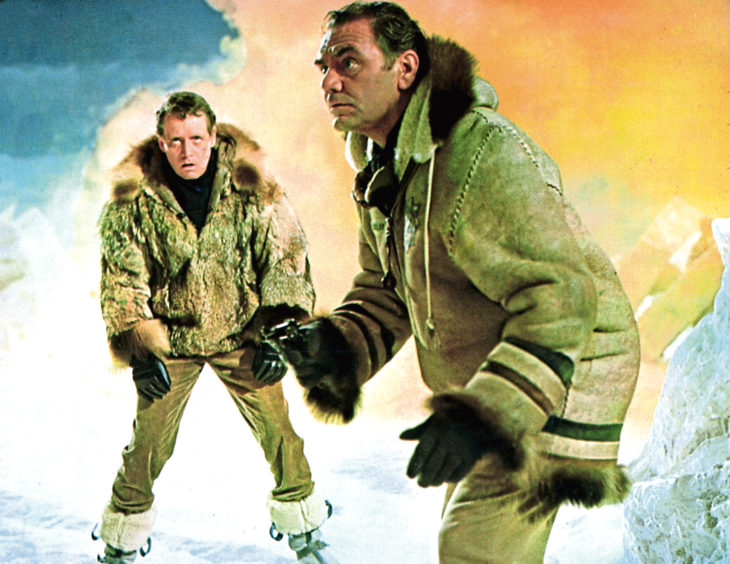
Howard Hughes was the original eccentric billionaire.
Famous for his reclusive lifestyle, even his death is surrounded by mystery.
Hughes is “reported” to have died on April 5 1976 at 1.27pm on board a private jet, en route from his penthouse at the Acapulco Fairmont Princess Hotel in Mexico to the Methodist Hospital in Houston, Texas.
But his reclusiveness and possibly his drug use made one of the most famous men in the world practically unrecognisable.
Hughes’ long-standing alias John T Conover was used when his body arrived at the morgue.
His hair, beard, fingernails and toenails were long, his tall 6ft 4in frame weighed barely 90lbs and the FBI had to use fingerprints to conclusively identify the body.
The subsequent autopsy recorded kidney failure as the cause of death. Hughes was also in extremely poor physical condition as he was suffering from malnutrition and was covered in bedsores.
X-rays revealed five broken-off hypodermic needles in the flesh of his arms as the germaphobic Hughes had insisted on using glass syringes with metal needles that became easily detached to inject the codeine to which he was addicted into his muscles.
It was a desperately sad end for a man who had had the world at his fingertips.
But even stranger events were still to come.
About three weeks after Hughes was buried next to his parents in Houston’s Glenwood Cemetery, a handwritten will was found on the desk of an official of The Church of Jesus Christ of Latter-Day Saints in Salt Lake City, Utah.
This so-called “Mormon Will” gave $1.5 BILLION to various charitable organisations, including $625m to the Howard Hughes Medical Institute, half-a-billion to various upper management types in his companies and aides, $156m to his first cousin and the same amount to be split between his two ex-wives.
Most bizarrely of all, the will endowed another $156m to a gas-station owner, one Melvin Dummar, who had told reporters in 1967 that he’d found a dishevelled and dirty man lying alongside Route 95, 150 miles north of Las Vegas.
The man asked for a ride to Vegas, and Dummar says that after he dropped him off at the Sands Hotel, he told him he was Howard Hughes.
Dummar went on to claim that several days after Hughes’ death, a “mysterious man” appeared at his gas station, leaving an envelope containing the will on his desk.
Unsure if it was genuine and not knowing what to do, Dummar left the will at the LDS Church office.
The trouble was that the main elements of this will – leaving the bulk to the medical institute because he was seriously ill and ignoring most of his family – were contrary to the many wills that surfaced after Hughes’ death, and in 1978 a Nevada court ruled the Mormon Will a forgery and declared Hughes had died intestate.
The whole crazy tale was later adapted into the hit 1980 movie Melvin And Howard, which won the Oscar for Best Original Screenplay while Mary Steenburgen won Best Supporting Actress for her role as Dummar’s first wife.
After much legal wrangling, Hughes’ $2.5bn estate was eventually split in 1983 among 22 cousins while the court rejected claims from the states of Texas and California that they were owed inheritance tax.
You think the weirdness ends there? A year later, the Hughes estate paid an undisclosed amount to a certain Terry Moore who claimed she and Hughes had secretly married in international waters off Mexico – as you do – in 1949 and never divorced.
Moore never produced proof of a marriage but her book, The Beauty And The Billionaire, became a bestseller.
Many of you will be familiar with how Howard Robert Hughes Jr, who often claimed to have been born on Christmas Eve 1905 – there are conflicting sources – built his vast fortune.
He first found fame as a prominent film producer, building his way up to become a movie tycoon in control of RKO studios.
He then founded the successful Hughes Aircraft Company, and acquired Trans World Airlines, before using his entrepreneurial genius to build a vast and varied business empire that included huge real estate holdings.
The latter began when, staying in the Desert Inn in Vegas in 1966, Hughes refused to vacate his room and instead decided to purchase the entire hotel and casino complex, later buying up many of the city’s well-known hotels and being instrumental in changing its image from a cowboy town to a cosmopolitan city.
But the aviation obsession was partly responsible for Hughes’ unravelling as a near-fatal plane crash, when he was test flying his prototype XF-11 over Beverly Hills, left him in chronic pain and addicted to painkillers.
Hughes sustained a crushed collar bone, multiple cracked ribs, a crushed chest which collapsed his left lung and shifted his heart to the right side of his chest cavity, and third-degree burns.
He was also increasingly deaf, something that often leads to increased isolation, and his obsessive compulsive disorder began to dominate his life.
He’d always eaten the same thing for dinner, a New York strip steak cooked medium rare, salad and peas – but only the smaller ones, he’d push the larger peas to the side.
In 1958 Hughes wanted to screen some movies at a studio near his home. He stayed in the darkened screening room for four months, eating only chocolate and chicken and drinking only milk, surrounded by Kleenex boxes, storing his urine in bottles.
He sat in his seat, often naked, endlessly watching movies and staff were told not to look at him nor speak to him.
He then spent $11m staying at the Beverly Hills Hotel for a year, and later became obsessed with the film Ice Station Zebra, watching it 150 times in a loop.
In the last decade of his life, Hughes disappeared from public view, moving from hotel to hotel around the world with his entourage, starting at the aforementioned Desert Inn, always staying in the penthouse.
Worried about nuclear testing near Vegas, he offered million-dollar bribes to Lyndon B Johnson and Richard Nixon to stop them.
Hughes’ business holdings were controlled by a small cabal dubbed The Mormon Mafia because of the many followers of that particular church on the committee.
Hmm, I wonder if that has any connection to a certain will?
They went to great pains to satisfy his every whim, once persuading Baskin-Robbins to produce a special batch of their banana nut ice cream after HH became obsessed with it.
A few days later Hughes announced himself bored of the flavour, saying he only wanted French vanilla from then on, and the Desert Inn ended up distributing free banana nut ice to casino customers for a year.
Unsurprisingly, Hughes has inspired several films and movie characters, including the tall, Texan reclusive billionaire Willard Whyte who operates his business empire from the penthouse of a Vegas hotel in the 007 picture Diamonds Are Forever.
And you have to say, being in a Bond movie is a fitting memorial to one of the world’s truly odd men.

Enjoy the convenience of having The Sunday Post delivered as a digital ePaper straight to your smartphone, tablet or computer.
Subscribe for only £5.49 a month and enjoy all the benefits of the printed paper as a digital replica.
Subscribe © Everett/Shutterstock
© Everett/Shutterstock © Filmways Pictures
© Filmways Pictures